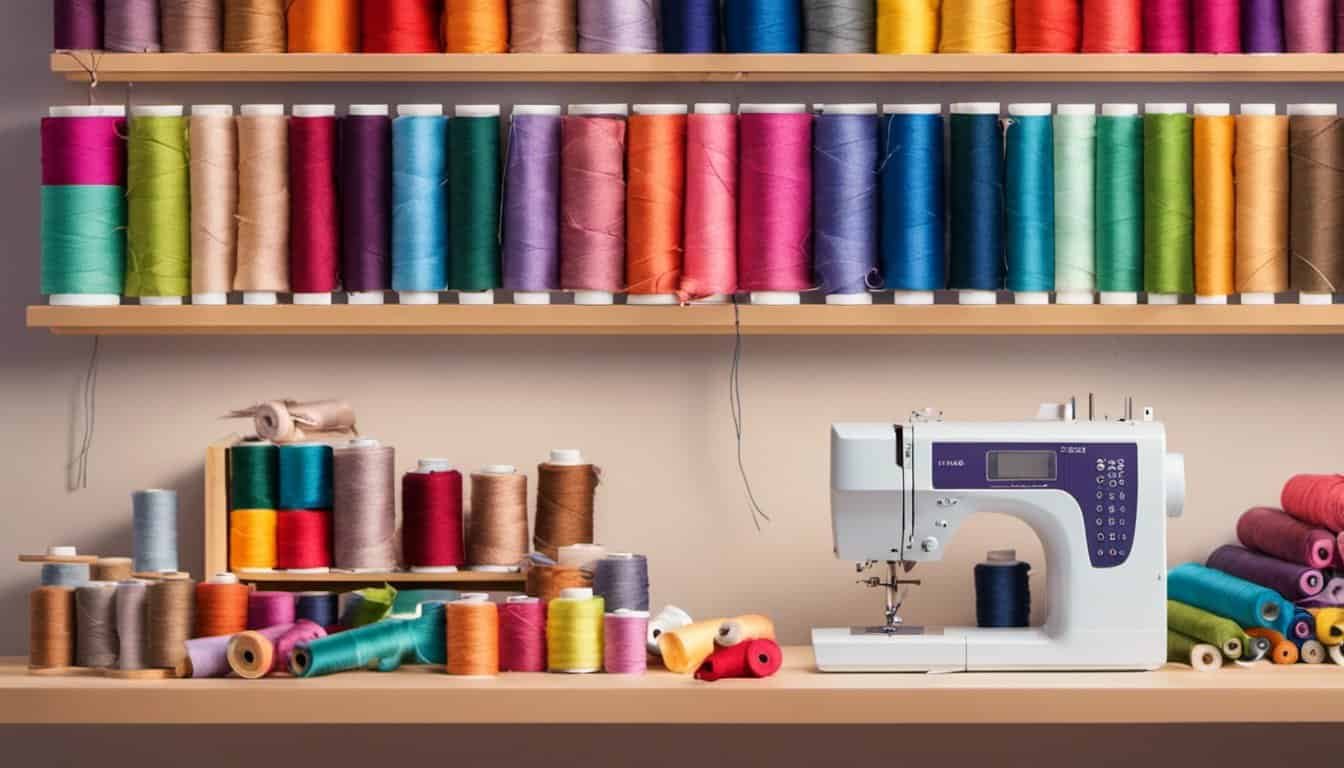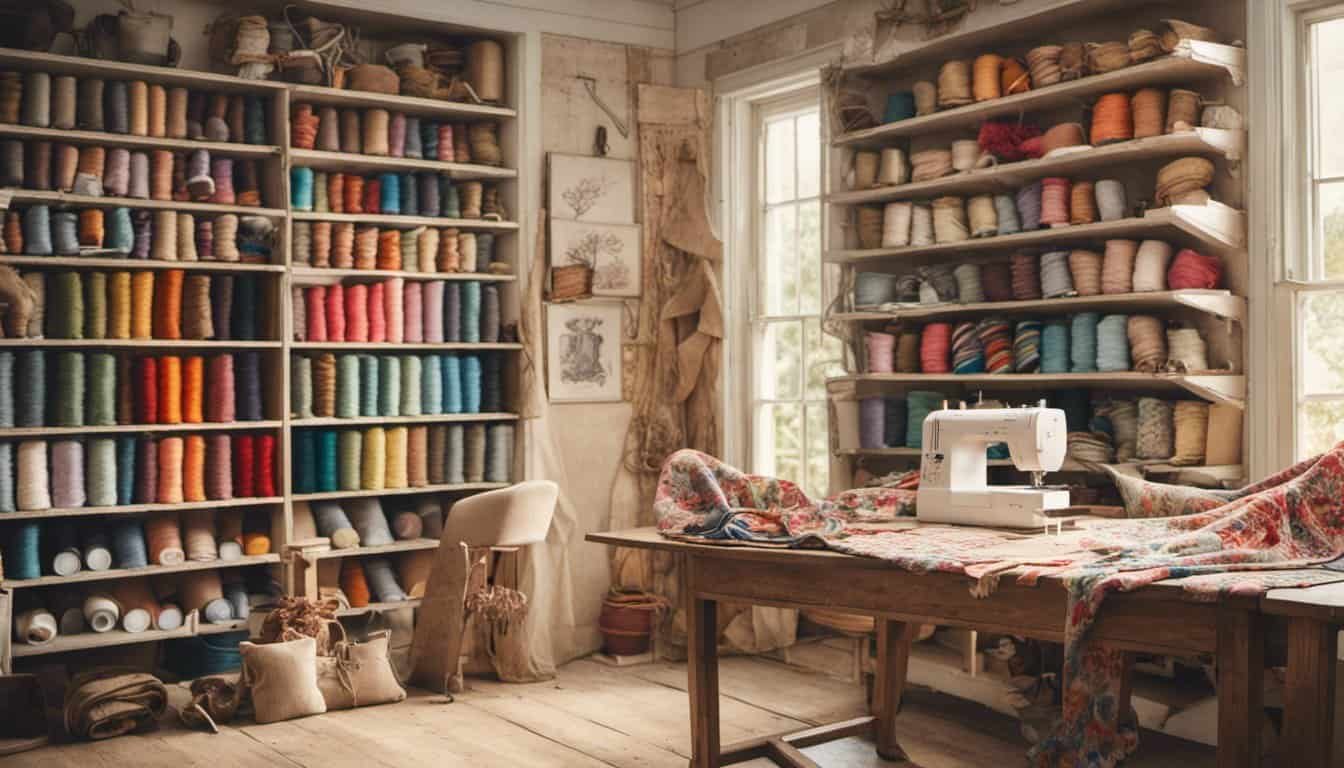Are you eager to create comfortable, stylish garments with knit fabrics but find that your projects end up stretched and misshapen? Sewing knits can be tricky, but with the right techniques, you can achieve professional-looking results every time.
In this guide, you’ll discover essential tips and tricks to handle your stretchy materials with ease. From choosing the right tools to mastering specific stitching methods, you’ll learn how to preserve the integrity of your fabric and create pieces that move with you.
Understanding Knit Fabrics
Knit fabrics feature interlocking loops, providing elasticity and flexibility. Unlike woven fabrics, they stretch both horizontally and vertically, making them ideal for garments that require movement.
Types of Knit Fabrics
- Jersey Knit
- Lightweight, smooth surface
- Common in T-shirts, dresses
- Rib Knit
- Distinctive vertical ribs
- Used for cuffs, collars, waistbands
- Interlock Knit
- Double-faced, stable structure
- Suitable for baby clothes, activewear
- Stretch Knit
- High elasticity
- Perfect for leggings, swimwear
Key Properties
Elasticity
- Allows fabrics to stretch up to 30%
- Essential for comfort and fit
Breathability
- Facilitates air circulation
- Keeps garments cool and dry
Softness
- Provides a comfortable feel against the skin
- Ideal for casual and intimate apparel
Common Fiber Types
| Fiber | Characteristics | Examples |
|---|---|---|
| Cotton | Natural, breathable, absorbent | T-shirts, underwear |
| Polyester | Durable, wrinkle-resistant | Activewear, outer garments |
| Spandex | Highly stretchy, resilient | Leggings, swimwear |
| Rayon | Soft, drapes well | Dresses, blouses |
Considerations for Sewing
Fabric Weight
- Light, medium, heavy
- Determines needle and thread choice
Stretch Level
- Low, moderate, high
- Influences seam techniques
- Smooth, textured
- Affects ease of handling
Understanding these aspects ensures successful sewing projects with knit fabrics, maintaining their integrity and appearance.
Essential Tools And Materials
To sew knit fabrics without stretching, you need specific tools and materials tailored for stretch. Using the right equipment ensures your projects maintain their shape and flexibility.
Choosing The Right Sewing Machine
Select a sewing machine designed for stretch fabrics. Models with stretch or jersey stitch settings allow elasticity without puckering. Opt for machines with adjustable tension controls to accommodate different fabric weights. A walking foot or dual feed system manages the knit’s movement, preventing distortion during sewing. Ensure your machine has built-in stretch stitches or offers compatible stretch stitch presser feet.
Selecting Appropriate Needles And Threads
Use ballpoint needles to prevent fabric damage, as they glide between yarns without piercing them. Size 70/10 or 80/12 needles suit most knit fabrics. Choose polyester or nylon thread for their elasticity and strength, reducing breakage and allowing seams to move with the fabric. Avoid cotton threads, which lack stretch and can cause seams to snap. For added durability and flexibility, consider double threads or ballpoint twin needles in your seams.
Preparing Your Fabric For Sewing
Pre-Washing Your Fabric
Start by washing your knit fabric before sewing. It removes any sizing and prevents future shrinkage. Use cold water and a gentle cycle to maintain the fabric’s integrity.
Pressing the Fabric
Iron your fabric on a low heat setting using a pressing cloth. Pressing smooths out wrinkles and sets any pre-wash treatments. Avoid stretching the fabric while ironing to keep its shape.
Stabilizing the Fabric
Apply a fabric stabilizer if needed. Stabilizers prevent shifting and stretching during sewing. Choose clips or pins designed for knit fabrics to keep layers aligned without damaging the material.
Marking and Cutting
Lay your fabric flat on a cutting surface. Use pattern weights instead of pins to avoid stretching. Mark your patterns with disappearing ink pens or fabric chalk for accuracy. Cut carefully along the marked lines to ensure precise pieces.
Using the Right Tools
Ensure you have the appropriate tools for handling knit fabrics. Utilize sharp scissors or rotary cutters for clean edges. Consider using a seam ripper for any necessary adjustments without harming the fabric.
Organizing Your Workspace
Keep your workspace organized to minimize fabric movement. Arrange your tools and fabric pieces within easy reach. A tidy area reduces the risk of accidental stretching and helps maintain fabric alignment.
Choosing the Right Thread
Select a thread that matches your fabric’s stretch. Polyester or nylon threads work best for knit fabrics due to their flexibility. Avoid cotton threads, as they lack the necessary elasticity and can cause seams to break.

Selecting Appropriate Needles
Use ballpoint needles for sewing knit fabrics. Ballpoint needles slide between the fabric’s threads without piercing them, preventing runs and snags. Choose size 70/10 or 80/12 needles for most knit types.
Securing Seam Allowances
Manage seam allowances carefully to prevent stretching. Use double stitching or serging for added strength. Ensure seams are not too tight, allowing the fabric to retain its natural elasticity.
Testing on Scrap Fabric
Before sewing your project, test your settings on a scrap piece of fabric. This practice ensures your tension, stitch length, and needle choice work well without causing stretching. Adjust as needed for optimal results.
Techniques To Sew Knit Fabrics Without Stretching
Mastering specific techniques ensures your knit projects retain their shape and elasticity. Implement these methods to achieve professional results.
Using Stretch Stitches
Select stretch stitches that accommodate fabric elasticity. Employ the following options:
- Zigzag Stitch: Allows fabric to move without puckering.
- Stretch Stitch (Jersey Stitch): Provides continuous stretch along the seam.
- Balloon Stitch: Offers additional flexibility for heavily stretched areas.
« How to Work with Canvas for Durable Bags: 7 Expert Tips You Need Now
You Won’t Believe How Easy It Is to Sew Pet Toys for Animal Shelters »
These stitches adapt to the fabric’s movement, preventing seams from breaking or stretching out of shape.
Adjusting Tension Settings
Proper tension settings balance thread and fabric movement. Follow these steps:
- Thread Tension: Lower the upper thread tension to reduce strain on the fabric.
- Bobbin Tension: Adjust the bobbin tension slightly higher if stitches appear loose.
- Test Stitches: Sew on scrap fabric and observe stitch quality. Adjust incrementally for optimal balance.
- Stretch Capability: Ensure tension settings allow the fabric to stretch without distorting the stitches.
Fine-tuning tension prevents fabric distortion and maintains seam integrity during and after sewing.
Common Mistakes To Avoid
Using the Wrong Needle Type
Choosing the incorrect needle can damage knit fabrics. Ballpoint needles prevent snags by slipping between fabric fibers. Avoid sharp needles that pierce the fabric, leading to runs and holes.
Incorrect Tension Settings
Improper tension causes puckering or loose seams. Lower the upper thread tension to accommodate the fabric’s stretch. Adjust bobbin tension slightly if seams appear uneven.

Selecting Inappropriate Stitches
Standard stitches restrict fabric movement and can cause distortion. Opt for stretch-compatible stitches like zigzag, stretch (jersey), or balloon stitches. These stitches allow the fabric to maintain its elasticity.
Skipping Fabric Preparation
Neglecting to pre-wash or press the fabric affects the final outcome. Pre-washing removes sizing and prevents shrinkage. Pressing on a low heat setting smooths wrinkles, ensuring accurate sewing.
Using Pins Instead of Pattern Weights
Pins can create unwanted marks and distort the fabric. Pattern weights secure layers without piercing, maintaining the fabric’s integrity during sewing.
Pulling the Fabric While Sewing
Tugging fabric disrupts the knit’s structure. Let the sewing machine feed the fabric naturally. Use a walking foot or dual feed system to manage movement effectively.
Using Cotton Thread
Cotton thread lacks elasticity, leading to brittle seams. Select polyester or nylon threads for their stretch and strength. These threads accommodate the fabric’s flexibility, ensuring durable seams.

Ignoring Fabric Type Characteristics
Different knit fabrics require specific techniques. Recognize the unique properties of jersey, rib, interlock, and stretch knits. Tailor your approach to each fabric’s elasticity and weight for optimal results.
Overlooking Seam Finishes
Unfinished seams can fray and weaken over time. Use serged edges or double stitching to reinforce seams. Proper seam finishes enhance durability and maintain the garment’s appearance.
Not Testing on Scrap Fabric
Testing stitches on scrap fabric prevents mistakes on the actual project. Experiment with settings and stitches to find the best combination for your specific fabric.
Avoiding these common mistakes ensures your knit sewing projects remain unstretched and professionally finished. Implement these tips to maintain the integrity and appearance of your knit fabrics.
Tips For Finishing And Maintenance
Seam Finishes
Use serged edges to prevent fraying, ensuring durability. If a serger isn’t available, apply a zigzag stitch along seam edges. Secure seams by trimming excess fabric for a clean look.

Hemming Techniques
Employ double-fold hems for a professional finish, especially on garments like sweaters. Stretch stitches accommodate fabric elasticity, allowing hems to retain shape without stretching.
Pressing
Press seams open using a low heat setting to avoid stretching. Utilize a pressing cloth to protect knit fibers, maintaining fabric integrity during the process.
Washing Instructions
Wash knit garments inside out with cold water to minimize stretching. Opt for gentle cycles and avoid excessive agitation, preserving fabric shape and elasticity.
Storing Knit Garments
Fold knits instead of hanging to prevent stretching. Store garments in a cool, dry place, avoiding heavy items that can distort fabric over time.
Avoiding Common Issues
Prevent stretching by using appropriate thread types, such as polyester or nylon. Regularly inspect seams and hems for signs of wear, addressing issues promptly to maintain garment quality.

Conclusion
Mastering the art of sewing knit fabrics opens up a world of creative possibilities for your wardrobe. By selecting the right tools and techniques you can ensure your projects maintain their shape and comfort. Take your time to prepare your fabric and choose the appropriate stitches to achieve professional results.
Embrace the flexibility that knit fabrics offer and enjoy crafting garments that move with you. With practice and patience your sewing skills will continue to grow and your creations will become even more impressive. Keep experimenting and have fun bringing your unique ideas to life!

















